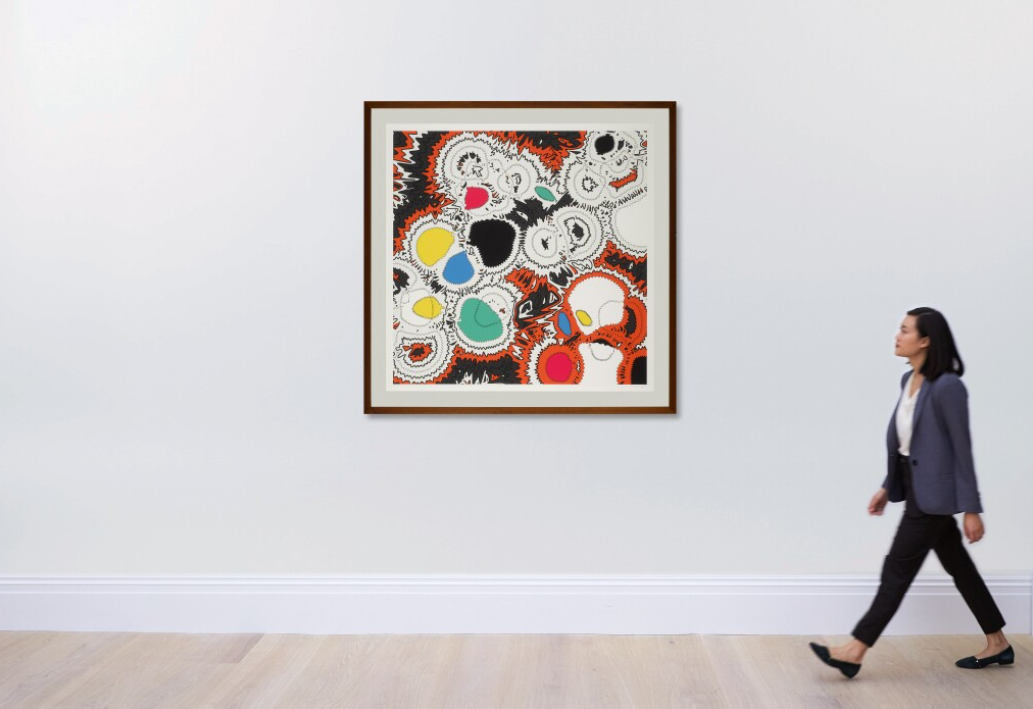
05/28/2024
by Michael McCarty
Founder, Tribeca Printworks
When you’ve captured or created a compelling image, making art prints to gift or sell is an ideal way to let others admire your work. Prints are authorized reproductions of your work that let enthusiasts enjoy your art while you keep the original, which could fetch higher prices in the future as your career grows.
Learning about the options available and how to make prints of paintings, drawings or photos with exceptional quality can help you make the best decisions for sharing your creativity with others.
Different Materials for Making Art Prints
You can choose from multiple mediums to create beautiful, high-quality prints.
Canvas Giclee
Savvy creatives have relied on canvas for centuries. This eco-friendly material lends an appealing tactile feel to finished works. It also features a tight weave and excellent durability, which make it ideal for long-lasting artwork.
Canvas giclee prints combine this popular medium with a style of digital printing using pigment-based inks to produce rich images with high resolution, quality and detail. Many finishing options are available to highlight your work, from gloss choices to custom framing and edge treatments.
Aluminum
Printing your work on aluminum lets you showcase your art in a unique way. This material is also lightweight and very durable, so admirers can enjoy your image for years to come. HD aluminum prints feature a dye sublimation process and thin substrate that results in a sleek and modern feel. Various finishes are available for a one-of-a-kind look enthusiasts will be delighted to display.
Fine Art Giclee Printing Paper Options
Fine art giclee paper prints are a timeless option that combines the traditional display and appeal experience with modern printing methods to produce archival-quality results. As with all giclee prints, they offer high-resolution images, vibrant colors and rich detail.
Paper options range from matte and glossy to selections with a soft sheen or metallic surface. Different weights, textures, thicknesses and tones are available to meet your work’s needs. This variety allows you to choose the ideal paper substrate to showcase your imagery at its best.
Learn How to Make Art Prints That Captivate
You can make prints of artwork by following the three tips below.
How to Digitize Your Image for Physical Pieces
If you are working with a physical piece, digitizing your creativity is the first step of the process, and that involves accurately capturing your image. The tones, colors and details in the reproduction depend on a high-quality file to print from.
Start with a high-quality scanner and scan your image. If your art is too large for a home scanner, visit a local print shop and work with them to scan it on bigger commercial scanners. You can also take a high-resolution photo of your work to upload — using a tripod will help produce a clear, crisp picture.
After you’ve captured an image of your work, open an editing program and refine it. For example, you may want to correct any color differences, crop edges and make frame adjustments for better composition. Upload the final image to your printing partner after verifying that it meets their minimum resolution requirements. The ideal resolution for your scan can vary based on many factors, so follow the resolution recommendations and guidelines your printer provides.
How to Choose the Right Medium
The medium you choose for your prints substantially impacts its look and feel. Consider your work’s design and style to get the best results. If you want a more contemporary aesthetic, HD aluminum prints may be ideal. Conversely, fine art paper prints and canvases are perfect for a classic museum-quality look. The right medium will also complement your image’s artistic style. A crisp, colorful photo pops with glossy substrates, while matte paper highlights image detail. You may prefer traditional canvas for more brush-like work.
If you’re gifting prints or selling in person, you’ll want to consider the surroundings and display environment. A well-lit location may call for matte finishes to reduce glare potential. Creatives who choose to sell online can use their artistic expertise or professional design guidance to decide the best options to offer their customers.
How to Choose the Best Fine Art Printing Services
You can make high-quality prints with expert print-on-demand providers like Tribeca Artworks. It’s vital to research potential partners to find the one that best meets your needs:
- Ask about fundamentals: High-quality prints depend on first-rate inks, mediums, equipment and effective color management. A trusted partner will gladly answer questions about their substrate options, ink, technology and processes to ensure accurate, consistent results.
- Evaluate previous work: Experienced providers will encourage creatives to browse examples of prior projects and clients they’ve helped that demonstrate their work and capabilities. Many will also post images online, making their social media accounts visual research tools.
- Investigate their expertise: A respected print-on-demand partner demonstrates their expertise and willingly shares it. Look for blog posts and valuable learning resources that inspire confidence in their knowledge.
- Read the reviews: Many people are happy to talk about their experiences with a company. When you read through the reviews, you gain insights into critical factors like customer service and quality.
- Explore extra value: Not all print-on-demand providers offer the same service and options for their prices. A true partner invests in your satisfaction with value-added solutions like expert design advice, on-site hand-crafted framing, and professional packing and shipping at competitive rates.
Selling Your Artwork
After you’ve learned how to make prints of your art to sell, there are several steps you can take to help boost your chances of success.
Choose Your Sales Channels
There are two primary ways to sell your prints — online and in-person.
Over 19% of all shopping occurs online, making it a viable strategy for reaching potential customers nationwide. You have multiple ways to harness digital shopping:
- Your own website: Many creatives already maintain websites with portfolios of their work. A simple upgrade can integrate shopping cart functionality through trusted providers, giving buyers the ability to purchase directly from you.
- Online marketplaces: Sites like Etsy, Pinterest and Amazon give you exceptional opportunities to reach large audiences thanks to the millions of shoppers who visit them. There are often selling, listing or transaction fees involved to learn more about before deciding if these are right for you.
- Social media platforms: Popular social media sites like Facebook, Instagram and X allow you to open free accounts. You’ll need a specialized shop to sell directly on them, although you can share posts of your work with followers at no charge.
In-person events have the distinct advantage of viewing your work firsthand instead of on a screen, which can be more impressive to buyers. Check local venues for opportunities like art fairs and juried festivals where potential customers expect high-quality imagery. Connections with local galleries can also help you attract in-person customers.
Price Your Prints
Determining the ideal price point for your art prints involves balancing your customer’s expectations with your profitability. That means avoiding the temptation to price your prints like you would if you were selling the original and establishing a price that doesn’t devalue your original in the future.
Potential factors and strategies to consider include:
- Tiered pricing: Print-on-demand services empower artists to give their customers customization options, such as size and framing choices. The production price varies as these selections change, so implementing a tiered structure based on chosen options helps protect your bottom line.
- Dynamic pricing: This strategy enables price adjustments based on demand. For example, you can decide that only a limited number of prints will be available for a specific work. This declaration creates a sense of urgency in customers, allowing you to raise the prices as fewer buying opportunities remain.
- Cost-plus pricing: This method is one of the most popular and easiest to implement. Determine the production prices for each option you offer and add a fair markup to them.
- Psychological pricing: This marketing tactic involves pricing an item just below the next highest price point to reduce purchasing objections. For instance, you can sell a print for $49 instead of $50.
- Exclusive offers: Promotional discounts and special pricing are excellent ways to persuade buyers. Calculate how much you’re willing to offer for loyalty, first-time purchases or seasonal sales to entice your customers.
Protect Your Work
Your creative works enjoy immediate copyright protection under United States law the moment they’re “fixed” in a medium. By definition, fixation happens once you’ve painted the last stroke, pressed the shutter or made the final digital edit. Although you needn’t register with the U.S. Copyright Office to preserve your rights, the agency recommends doing so before “publishing.” That term includes offering prints for sale, and registration helps ensure legal protection against infringement.
Promote Your Prints
Several ways to promote your prints exist, whether you sell online, in person or both. A marketing plan that includes the following can help boost your chances of successful sales:
- Email: Having customers and potential buyers provide their email should be a primary goal. You can quickly and easily let them know about upcoming shows, discounts or promotions, or a new print release. Ensure you follow privacy and contact regulations and provide a way to unsubscribe.
- Paid advertising: Popular marketplaces are highly competitive, so a paid advertising strategy may be necessary to ensure your work gets in front of your target audience.
- Social media: Creating accounts on platforms that prioritize visuals, like Instagram, is ideal for generating traffic. Encourage your followers to share your posts for even more exposure. Similar to marketplaces, business accounts may need to invest in paid promotion to gain traction and visibility.
- Word of mouth: It’s common knowledge that buyers trust the recommendations of others when they make purchasing decisions. Solicit and display positive feedback you get from customers as social proof of your artwork’s quality and design appeal.
Package and Ship
Attractive, sturdy packaging and reliable shipping are crucial to your customers’ satisfaction since they help promote timely receipt of undamaged work. If you’ll be handling the logistics yourself, wrap the print in acid-free paper and a plastic moisture barrier. Choose rigid packaging boxes or mailing tubes to prevent folding or bending.
Your print-on-demand provider may also handle the shipping on your behalf. At Tribeca Printworks, we regularly print, frame, pack and ship orders for sellers directly to their customers nationwide. Many also qualify for free shipping to help artists keep more of what they earn.
Collaborate With Tribeca Printworks to Make Art Prints
Tribeca Printworks is a trusted full-service studio for creating captivating, customized fine art prints worthy of gifting or selling. We offer the finest materials at competitive prices to produce museum-quality results your recipients and customers will be excited to display. Each of our hand-selected mediums offers longevity rated at a minimum of 70 years to ensure art enthusiasts decades of enjoyment.
Our studio houses cutting-edge printing technology and custom framing for a turnkey print-on-demand solution with lightning-fast turnaround times. We also offer free design consultations so you can be confident in the options you choose or offer for sale.
Contact us online for more information, or visit our New York City studio for personalized assistance.
How Big Can I Print My Photos and Artwork?
So you want to print an image off of your phone, your DSLR, or *gasp* the internet! Maybe you’re trying to reproduce your original artwork? Your first question will most likely be, how big can I print this file? When faced with this question, we often respond with “how large is large for you?…READ MORE
by Laura Gardiner 04/16/2020
What Is The best Way To Print My Art and Photography?
How should I print my photos and artwork? You’ve come to the point in your artistic career where you’re ready to take it to the next level and start printing your work. Perhaps it is exporting those photos off your camera for the first time…READ MORE

